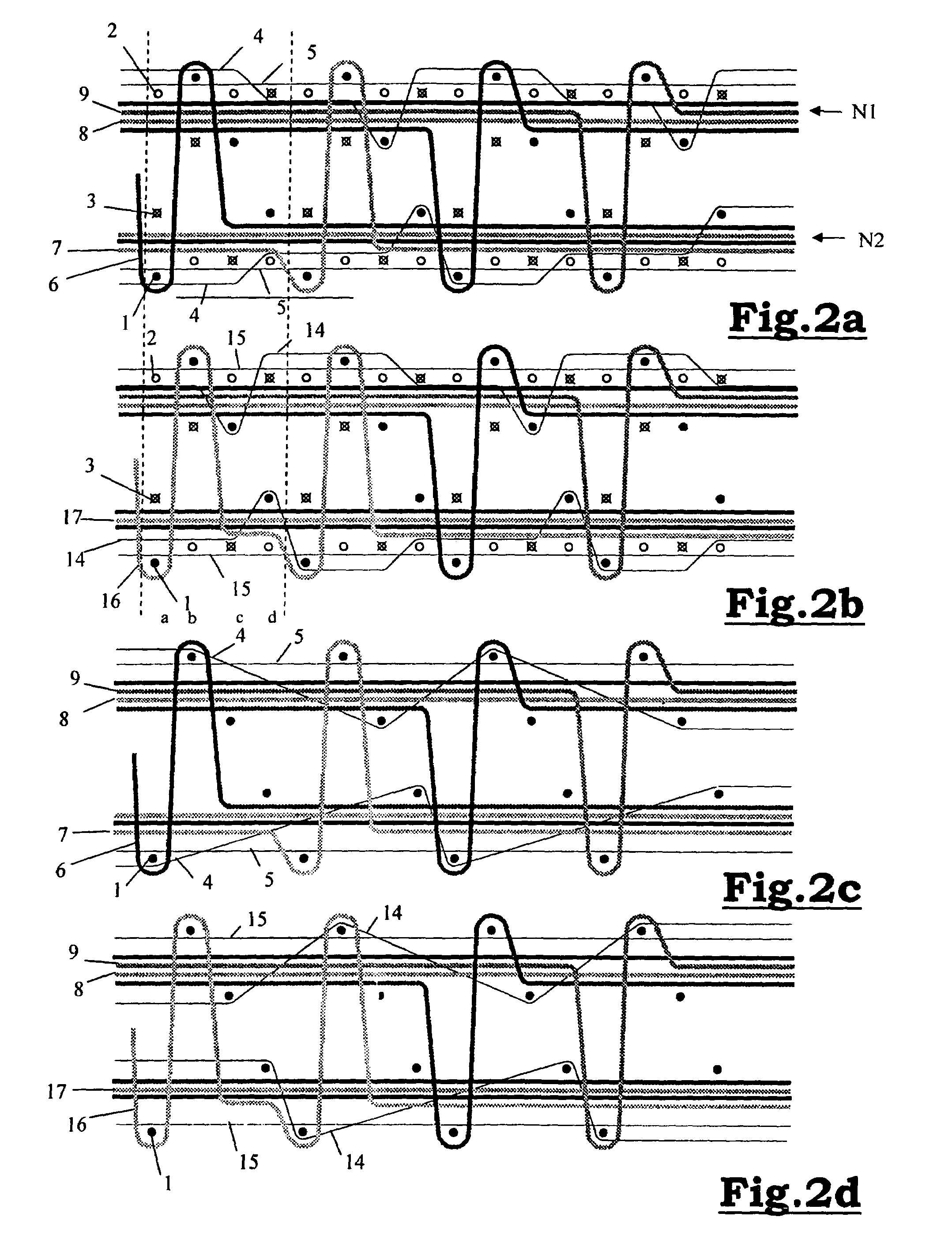Method for manufacturing high density pile fabrics
a technology of woven piles and fabrics, applied in the direction of weaving, woven fabrics, textiles and paper, etc., can solve the problems of difficult to apply to the design, difficult to distinguish fabric patterns, and difficult to form delicate designs, and achieve the effect of high density and nice back
- Summary
- Abstract
- Description
- Claims
- Application Information
AI Technical Summary
Benefits of technology
Problems solved by technology
Method used
Image
Examples
Embodiment Construction
[0062]The face-to-face pile fabric represented in the figures consists of an upper an a lower backing fabric. Both backing fabrics consist of binding warp yarns, tension warp yarns and weft yarns. Pile forming pile warp yarns are alternately interlaced in the upper and the lower fabric around a weft yarn, whereas non pile forming (dead) pile warp yarns are interlaced in the upper or the lower backing fabric and each of which is positioned on a different level (N1, N2).
[0063]Each figure is made up of four parts (a), (b), (c) and (d), where (a) is representing the course of the pile warp yarns (6, 7, 8, 9) of one pile warp system within one reed dent with the accessory part of the backing warp yarns (4, 5) and (b), the pile warp yarns (16, 17, 18, 19) of another pile warp system within the same reed dent with its accessory backing warp yarns (14, 15). Both in (a) and in (b) the positions of the weft insertion means are indicated with respect to the warp yarns and is indicated with whi...
PUM
 Login to View More
Login to View More Abstract
Description
Claims
Application Information
 Login to View More
Login to View More - R&D
- Intellectual Property
- Life Sciences
- Materials
- Tech Scout
- Unparalleled Data Quality
- Higher Quality Content
- 60% Fewer Hallucinations
Browse by: Latest US Patents, China's latest patents, Technical Efficacy Thesaurus, Application Domain, Technology Topic, Popular Technical Reports.
© 2025 PatSnap. All rights reserved.Legal|Privacy policy|Modern Slavery Act Transparency Statement|Sitemap|About US| Contact US: help@patsnap.com



